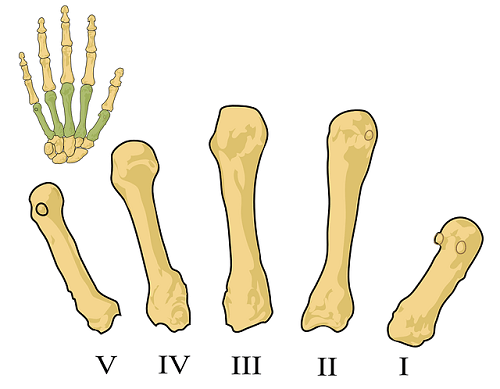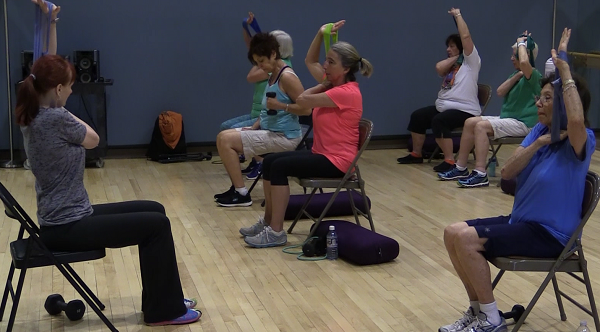 Are you one of the 44 million adults over the age of 50 who struggle with osteoporosis or low bone density? If so, you probably know that you face an increased risk of fractures; however, contrary to popular belief, these fractures are not inevitable. There are lots of things you can do to treat osteoporosis and prevent fractures and other injuries. Read on to learn about the five of the most effective ways to manage osteoporosis to improve your health and quality of life.
Are you one of the 44 million adults over the age of 50 who struggle with osteoporosis or low bone density? If so, you probably know that you face an increased risk of fractures; however, contrary to popular belief, these fractures are not inevitable. There are lots of things you can do to treat osteoporosis and prevent fractures and other injuries. Read on to learn about the five of the most effective ways to manage osteoporosis to improve your health and quality of life.1. Consume Calcium and Vitamin D
Your bones may be more fragile than they once were, but that doesn’t mean that you can no longer benefit from nutrients like calcium and vitamin D. Consuming 1200 milligrams of calcium each day will help you maintain bone strength and density as you age. It’s best to get calcium from whole foods rather than calcium supplements. The calcium found in most supplements is not absorbed as easily as the calcium in food.
Good food sources of calcium include:
-
Dairy products
-
Nuts, especially almonds
-
Cruciferous vegetables like cauliflower and broccoli
-
Canned fish like salmon and sardines
-
Leafy green vegetables
It’s also important to make sure you’re consuming adequate vitamin D -- otherwise, you won’t be able to absorb the calcium you’re consuming. You can get vitamin D from spending time in the sun and from eating foods like egg yolks and organ meats. But, as you age, it can be difficult to get the recommended 600-800 international units of vitamin D each day, as your body doesn’t produce it as efficiently. A vitamin D supplement like cod liver oil can help fill in the gaps.
2. Avoid Foods that Promote Bone Loss
At the same time that you’re eating more foods that are rich in calcium and vitamin D, it’s also important to make sure you’re avoiding foods that can promote bone loss and prevent your body from absorbing calcium. It’s important to limit your phosphorus consumption when you struggle with osteoporosis. High phosphorus levels can increase your risk of bone loss. Red meat and soda are both high in phosphorus. Many processed foods also contain phosphate additives. You should also limit your alcohol and caffeine intake if you have osteoporosis. Both substances can limit calcium absorption.
3. Exercise Regularly
It might seem like a bad idea to exercise if you have osteoporosis; after all, won’t you just increase your risk of injury? In reality, weight-bearing exercise is essential for people who have osteoporosis and want to keep it from getting worse (it’s also essential for people who want to prevent osteoporosis).
Some of the best forms of exercise for people with osteoporosis include:
-
Running
-
Walking
-
Dancing
-
Stair climbing
-
Weightlifting
These types of exercise, when performed at least three times per week, can significantly improve bone strength and density. As a result, you’ll be less likely to experience fractures. If you struggle with limited mobility, don’t be afraid to make use of walkers and other mobility aids for older adults. With the help of these tools, you can still reap all the benefits of regular exercise.
4. Use Medications to Slow Bone Loss
The following lifestyle changes can also be made more effective with the help of bisphosphonates (medications that help slow bone loss).
Some of the most common bisphosphonates that doctors prescribe include:
-
Alendronate
-
Ibandronate
-
Risedronate
-
Zoledronic acid
-
Denosumab
These medications can be highly effective in treating osteoporosis. But, it’s important to remember that they work best when paired with a healthy diet and lifestyle -- don’t just expect the medication to do all the work for you.
5. Consider Hormone Medications and Therapy
Some doctors also prescribe hormone medications and hormone replacement therapy to help treat osteoporosis.
Some of the most common hormone medications include:
-
Raloxifene (functions like estrogen, which help the body maintain bone mass)
-
Abaloparatide and teriparatide (these are man-made forms of parathyroid hormone, which lowers fracture risk)
Menopausal or postmenopausal women can also benefit from hormone replacement therapy to increase estrogen levels and promote better bone mass. Hormone replacement therapy does come with some serious potential side effects, including blood clots, stroke, and heart attack. However, it can still be a good option for some women. Hormone replacement therapy usually includes estrogen or a combination of estrogen and progesterone. It can be administered in the form of a patch, tablet, injection, or cream.
Final Thoughts
Treating osteoporosis and preventing fractures is possible for all seniors. You don’t have to remain sedentary to stay safe from injuries -- in fact, that will actually increase your injury risk. Start giving these lifestyle changes and medications a try today to maintain your health and improve your quality of life.


Comments